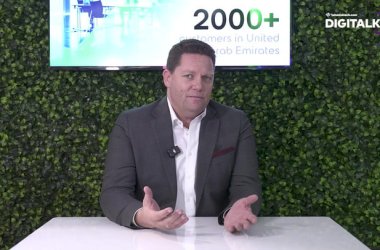Diana Dib, Partner, and Prateek Chauhan, Principal, at Strategy& Middle East, part of the PwC network, have co-authored a thought leadership article for tahawultech.com, which examines the steps, measures and procedures technology leaders can implement in order to seize on the opportunities presented by Generative AI.

The advent of generative AI (GenAI) represents an inflection point in the innovation cycle — similar to how the internet gave rise to a burgeoning software market, and smartphones spawned apps and social media. In 2023, global private investments in GenAI exceeded $25 billion, including $415 million in venture capital investment in the Middle East.[1]
This foundational shift is creating multiple opportunities for the region’s tech champions to pursue innovation and disrupt markets. To differentiate themselves, they must develop a profound understanding of regional dynamics and a tailored approach to address specific market needs while being responsive to emerging trends.
Middle East tech champions should explore five strategies to focus their investments and achieve a long-term competitive advantage.
Focus on industry verticals
Established players—including hyperscalers, closed and open-source data and AI platform providers, and large language model (LLM) incumbents—dominate infrastructure, foundation platforms, and foundation models. Still, regional champions can capture market share by creating specialized solutions tailored to verticals and enterprises. By targeting specific use cases, they can improve performance, quality, experience, and efficiency. Polaris forecasts that by 2032, the media and entertainment and the banking, financial services, and insurance FSI sectors in the Middle East and Africa are likely to be the top verticals, making up 70% of the $7.8 billion Gen AI market.[2]
Apps currently capture 30 to 35% value across the GenAI stack. Their strength lies in understanding the “control point”— the most important system in the business, which is also the last to be turned off to save costs— and building solutions around it. This involves fine-tuning models for industries or enterprises and developing front-end applications with unique and industry-specific workflows. Oracle, for instance, integrated a clinical digital assistant tool to its electronic health record platform, Cerner, reducing administrative tasks for clinicians and improving overall value proposition of their platform.[3]
Follow an integrated stack approach
Tech champions could develop solutions combining computational infrastructure (the software used to manage computing resources) and LLMs. This strategy enhances commercial returns, given its higher customer stickiness and capital efficiency. Dell, for instance, partnered with Hugging Face to offer solutions integrating infrastructure and GenAI models that enable customers to build and deploy their own GenAI applications.[4]
Own, localize, and control the infrastructure and computing stack
To ensure adaptability, scalability, and resilience in an ever-evolving tech landscape, regional tech players need to control the infrastructure layer, including data centers and equipment. Companies should focus on providing GenAI solutions in a localized environment, which allows for greater data security and supports customization for large regional enterprises and government customers. Watad, a Riyadh-based AI and cybersecurity company, implemented Mulhem, a domain-specific LLM model trained on local datasets and developed on NVIDIA’s on-prem high-performance computing system.[5]
Access unique datasets and proprietary IP
Solutions relying solely on publicly available data will not create incremental value or deliver a competitive advantage. That makes it critical for regional tech champions to gain and manage access to proprietary datasets. To develop intellectual property (IP) across key verticals, they should find co-investment opportunities with customers that could offer market traction. This approach provides companies with unique data sets while still allowing them to own IP. Tech champions could also explore strategic partnerships and licensing agreements with other organizations such as data providers, industry leaders, and research institutes.

Manage costs without hindering performance
GenAI models are becoming more expensive to train and deploy. For example, training costs for GPT-4 and Google’s Gemini Ultra are estimated to be around $78 million and $191 million, respectively.[6] Given LLMs are becoming larger and more expensive, regional tech champions could seek to contain costs while maintaining performance. They can achieve these twin goals by using an LLM controller, a tool for ranking and synthesizing output from multiple LLMs, to manage a cascade of smaller and cheaper models before relying on larger ones. This approach can significantly reduce costs.
To monetize GenAI offerings successfully, regional tech champions should partner with AI service providers that can build and deploy bespoke use cases for customers using their GenAI stack. Capturing GenAI market share also requires innovative pricing models, such as success-based pricing where fees are linked to the resolution of customer inquiries, or freemium pricing, where a basic service is deployed for free and monetized through premium offerings, end-customer usage, or both. As one example, Microsoft 365 Copilot has a free tier for users to promote adoption and premium pricing that includes additional GenAI features.
Regional tech champions have a significant opportunity to thrive in the era of GenAI—provided they adopt a strategy centered on one of five strategies and a clear go-to-market model. With global demand in GenAI increasing, regional tech champions should act now to secure a substantial share of this growing market.





